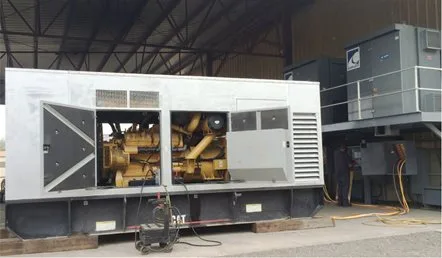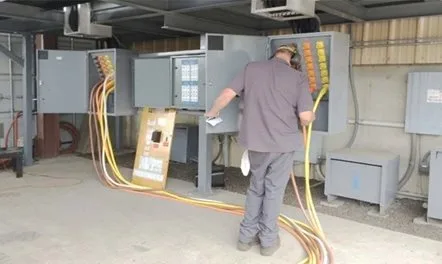Load bank testers simulate a facility’s load to evaluate generator output power. These self-contained, systematic devices include load elements and are designed to test emergency generators and associated systems.
Types of Load Testing
- Resistive Load Bank Tester
- Individual resistor load banks provide a load to the generator.
- Electrical current is converted into heat by power resistors.
- Simulates resistive loads such as:
- Incandescent light bulbs
- Space heaters
- Toasters
- Reactive Load Bank Tester
- Tests generators supplying power to motor-driven equipment, transformers, and capacitors.
- Resistive/Reactive Load Bank Tester
- Combines both resistive and reactive components in one unit.
- Ideal for facilities with both types of loads.

Resistive Load Bank Testing
Resistive load bank testers are the most commonly used. They simulate loads using banks of resistors and are directly connected to the generator output. As demand increases, the generator systems are tested to full capacity:
- Generator: Measures voltage and amperage at rated load.
- Enclosure Louvers: Ensures louvers open when enclosure temperature reaches the rated threshold.
- Engine Fuel System: Validates fuel system functionality under full load.
- Engine Cooling System: Monitors coolant temperature during actual load conditions.
- Engine Air Intake System: Confirms the operation of air intake systems, including louvers, under load.
Important Note:
Resistive load testing does not allow the generator to produce its full KVA rating. KVA (Kilovolt-Amperes) is the absolute value of complex power, calculated as the product of voltage (electrical pressure) and amperage (electrical current).
Reactive Load Bank Testing
Reactive load bank testers evaluate the generator’s performance at its rated power factor. Power factor measures how efficiently the current (load) is converted into useful work output, indicating the load’s impact on generator efficiency.

Common Components:
- Resistor:
- Separate banks simulate linear loads like incandescent lights and heating equipment.
- Used exclusively for linear loads.
- Inductive Load Bank:
- Uses an iron core reactive element.
- Creates a lagging power factor load when combined with a resistive tester.
- Simulates loads such as lighting and heating equipment.
- Capacitive Load Bank:
- Uses capacitor banks with dielectric materials to produce a leading power factor.
- Simulates non-linear loads like those in telecommunications, computers, and UPS systems.
- Electronic Load Bank:
- Fully programmable and air- or water-cooled.
- Simulates solid-state loads and provides a constant load source for precision testing.
Reactive load testing ensures the generator can efficiently handle real-world applications, including dynamic motor-driven or non-linear loads.